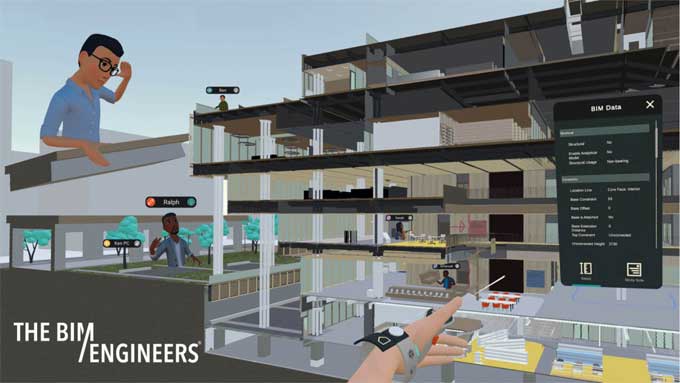BIM and the Metaverse: Unleashing the Power of Immersive Design and Construction
Tweet
Building Information Modeling (BIM) has revolutionized the construction industry by providing a comprehensive digital representation of a physical building. This intricate model, enriched with information about building components, materials, and systems, has transformed the way designers, engineers, and contractors collaborate and make informed decisions throughout the project lifecycle.
Now, the emergence of the metaverse, a shared virtual space accessible through augmented and virtual reality (AR/VR) technologies, is poised to further revolutionize the way we design, construct, and operate buildings.
The Allure of Immersive Experiences in the Metaverse
The metaverse presents a realm of possibilities for the AEC industry, offering a platform to transcend the limitations of traditional 2D representations and create immersive experiences that transform the way we interact with buildings. By integrating BIM models into the metaverse, project stakeholders can step inside virtual replicas of buildings, enabling them to:
1. Visualize and experience the building in its full context: Immersive walkthroughs allow designers, architects, and clients to navigate through the building's interior and exterior spaces, gaining a deeper understanding of spatial relationships, design intent, and potential issues early on.
2. Collaborate in real-time: Project stakeholders can gather in the virtual world to discuss design decisions, identify clash detection issues, and plan construction activities, resolving problems in real-time and minimizing the risk of costly rework later.
3. Communicate effectively with non-technical stakeholders: Immersive presentations and interactive models can effectively convey complex design concepts and technical details to clients and non-technical stakeholders, fostering a shared understanding of the project and its objectives.
BIM's Versatile Applications in the Metaverse
The applications of BIM in the metaverse extend far beyond design and construction, encompassing a wide range of functions throughout the building lifecycle:
1. Project Visualization and Communication: BIM models can be used to create virtual replicas of existing buildings, enabling stakeholders to visualize renovation plans, explore alternative design options, and experience the impact of proposed changes before they are implemented. This can be particularly valuable for historical buildings or sensitive environments where physical alterations are restricted.
2. Facility Management and Operations: BIM models can serve as digital twins of buildings, providing a centralized repository of data for facility management and operations. Real-time sensor data can be integrated with BIM models to monitor building performance, identify potential maintenance issues, and optimize energy usage. This can lead to improved asset management, reduced downtime, and enhanced energy efficiency.
3. Training and Education: Immersive training environments can be constructed using BIM models to educate construction workers, architects, and engineers on safety procedures, complex construction techniques, and building systems operations. This can provide a more engaging and effective learning experience compared to traditional classroom-based or on-the-job training.
Navigating Challenges and Seizing Opportunities
While the integration of BIM and the metaverse holds immense potential, it also presents challenges that need to be addressed:
1. Data Interoperability: Ensuring seamless data exchange between BIM software and metaverse platforms is crucial for creating a unified and consistent experience. Standardized formats and protocols are essential for transferring BIM models and associated data into virtual environments without loss of information or integrity.
2. Real-Time Performance: Rendering detailed BIM models in real-time demands powerful computing resources and optimized software algorithms. Hardware advancements and software development will be key to ensuring smooth and immersive experiences, particularly as BIM models become increasingly complex and incorporate more granular data.
3. User Experience and Accessibility: Designing intuitive and user-friendly interfaces for AR/VR applications is essential for broad adoption and accessibility. Accessibility considerations should be prioritized to ensure that all stakeholders, regardless of their technical expertise or physical abilities, can participate in the metaverse-enhanced BIM experience.
Conclusion: A Paradigm Shift in the AEC Industry
The convergence of BIM and the metaverse represents a paradigm shift in the AEC industry, offering a transformative approach to design, construction, and building management.
By harnessing the power of immersive technologies, BIM is poised to revolutionize the way we interact with buildings, fostering collaboration, enhancing communication, and optimizing project outcomes.
To get online demonstration, watch the following video tutorial.
Video Source: Autodesk Construction Cloud
As the metaverse matures and BIM adoption continues to grow, we can expect to see even more innovative applications and a revolutionized AEC ecosystem, where physical and virtual worlds seamlessly intertwine to shape the future of the built environment.

Gallery
Feel free to contact us for BIM requirements. One of our representative will respond you within 24 Hours. Send us your projects requirement today and grow your project.
Explore More !







